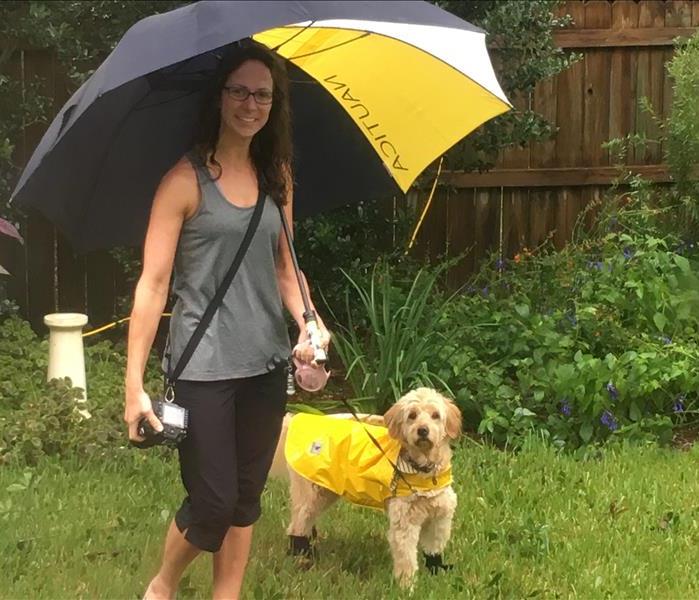Pet Preparedness Month: Prepare Your Pets for Disasters
6/22/2021 (Permalink)
Source: ready.gov
Your pets are an important member of your family, so they need to be included in your family’s emergency plan. Here are some things to think about as you make your plans.
Make a Plan
If you have a plan in place for you and your pets, you will likely encounter less difficulty, stress and worry when you need to make a decision during an emergency. If local officials ask you to evacuate, that means your pet should evacuate too. If you leave your pets behind, they may end up lost, injured or worse.
Things to include in your plan:
• Have an evacuation plan for your pet. Many public shelters and hotels do not allow pets inside. Know a safe place where you can take your pets before disasters and emergencies happen.
• Develop a buddy system. Plan with neighbors, friends or relatives to make sure that someone is available to care for or evacuate your pets if you are unable to do so.
• Have your pet microchipped. Make sure to keep your address and phone number up-to-date and include contact information for an emergency contact outside of your immediate area.
Build an Emergency Kit for Your Pet
Just as you do with your family’s emergency supply kit, think first about the basics for survival, such as food and water. Have two kits, one larger kit if you are sheltering in place and one lightweight version for if you need to evacuate. Review your kits regularly to ensure that their contents, especially foods and medicines, are fresh.
Here are some items you may want to include in an emergency kit for your pet:
• Food. Keep several days’ supply of food in an airtight, waterproof container.
• Water. Store a water bowl and several days’ supply of water.
• Medicine. Keep an extra supply of the medicine your pet takes on a regular basis in a waterproof container.
• First aid kit. Talk to your veterinarian about what is most appropriate for your pet’s emergency medical needs.
• Collar with ID tag and a harness or leash. Include a backup leash, collar and ID tag. Have copies of your pet’s registration information and other relevant documents in a waterproof container and available electronically.
• Traveling bag, crate or sturdy carrier, ideally one for each pet.
• Grooming items. Pet shampoo, conditioner and other items, in case your pet needs some cleaning up.
• Sanitation needs. Include pet litter and litter box (if appropriate), newspapers, paper towels, plastic trash bags and household chlorine bleach to provide for your pet’s sanitation needs.
• A picture of you and your pet together. If you become separated from your pet during an emergency, a picture of you and your pet together will help you document ownership and allow others to assist you in identifying your pet.
• Familiar items. Put favorite toys, treats or bedding in your kit. Familiar items can help reduce stress for your pet.
Hurricane season is upon us, so now is the time to prepare!






 24/7 Emergency Service
24/7 Emergency Service
